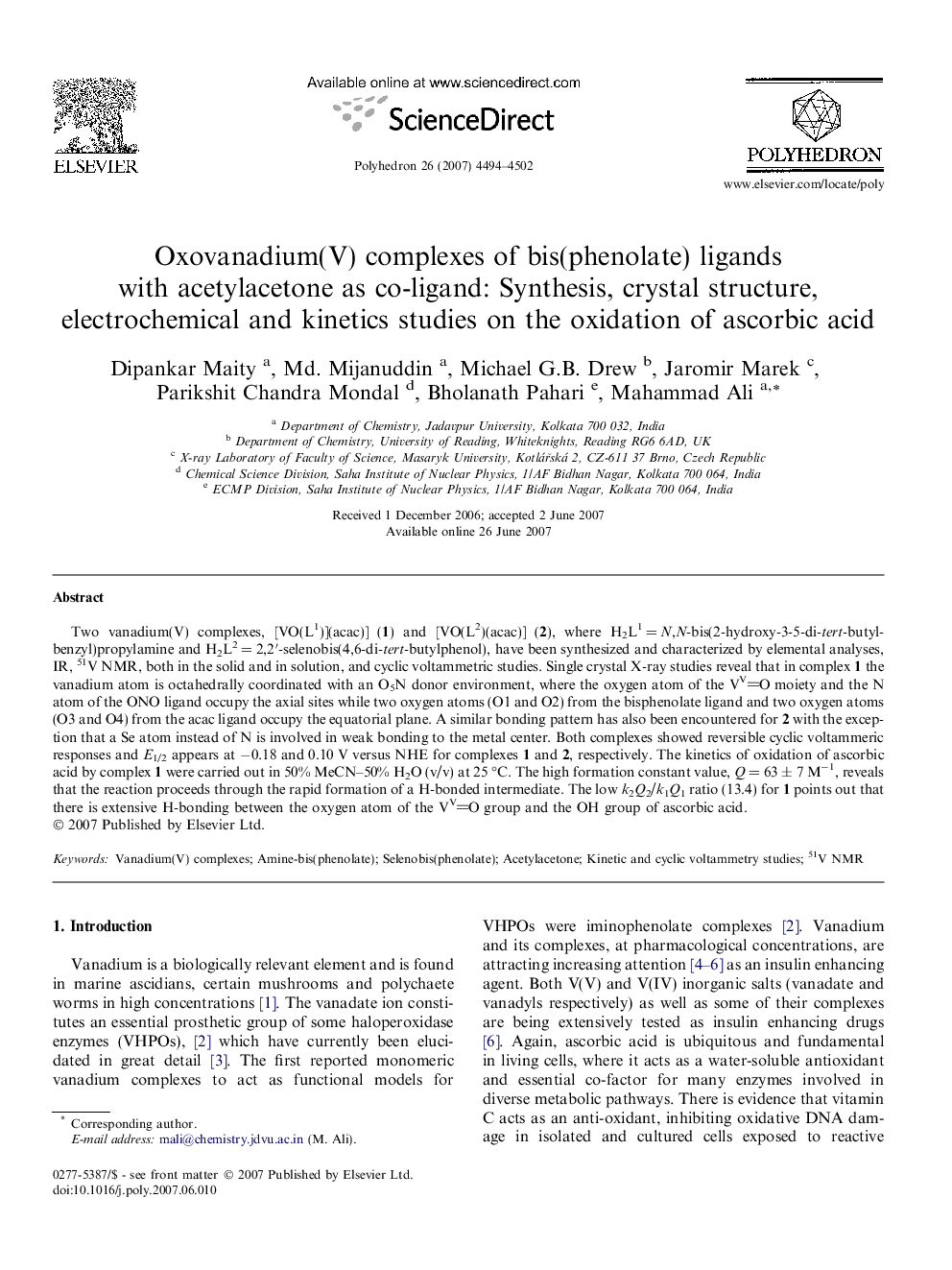| Article ID | Journal | Published Year | Pages | File Type |
|---|---|---|---|---|
| 1338332 | Polyhedron | 2007 | 9 Pages |
Two vanadium(V) complexes, [VO(L1)](acac)] (1) and [VO(L2)(acac)] (2), where H2L1 = N,N-bis(2-hydroxy-3-5-di-tert-butylbenzyl)propylamine and H2L2 = 2,2′-selenobis(4,6-di-tert-butylphenol), have been synthesized and characterized by elemental analyses, IR, 51V NMR, both in the solid and in solution, and cyclic voltammetric studies. Single crystal X-ray studies reveal that in complex 1 the vanadium atom is octahedrally coordinated with an O5N donor environment, where the oxygen atom of the VVO moiety and the N atom of the ONO ligand occupy the axial sites while two oxygen atoms (O1 and O2) from the bisphenolate ligand and two oxygen atoms (O3 and O4) from the acac ligand occupy the equatorial plane. A similar bonding pattern has also been encountered for 2 with the exception that a Se atom instead of N is involved in weak bonding to the metal center. Both complexes showed reversible cyclic voltammeric responses and E1/2 appears at −0.18 and 0.10 V versus NHE for complexes 1 and 2, respectively. The kinetics of oxidation of ascorbic acid by complex 1 were carried out in 50% MeCN–50% H2O (v/v) at 25 °C. The high formation constant value, Q = 63 ± 7 M−1, reveals that the reaction proceeds through the rapid formation of a H-bonded intermediate. The low k2Q2/k1Q1 ratio (13.4) for 1 points out that there is extensive H-bonding between the oxygen atom of the VVO group and the OH group of ascorbic acid.
Graphical abstractTwo octahedral vanadium(V) complexes, [VO(L1)](acac)] (1) and [VO(L2)(acac)] (2), have been synthesized and characterized by single crystal X-ray studies. The kinetics of oxidation of ascorbic acid by complex 1 was found to proceed by the formation of a H-bonded intermediate with Q = 63 ± 7 M−1.Figure optionsDownload full-size imageDownload as PowerPoint slide
